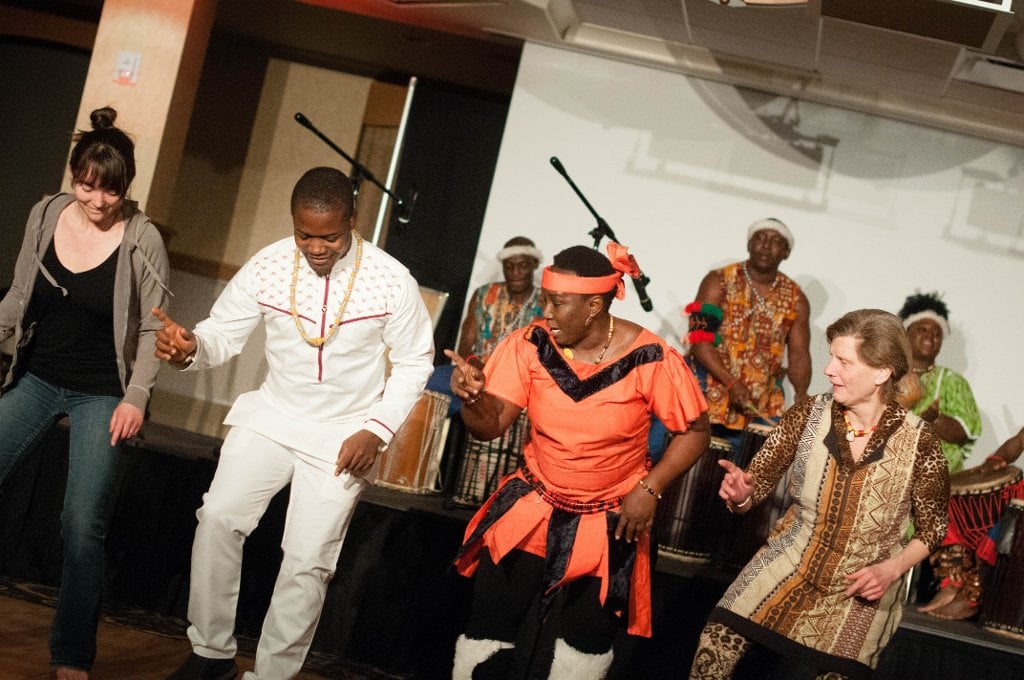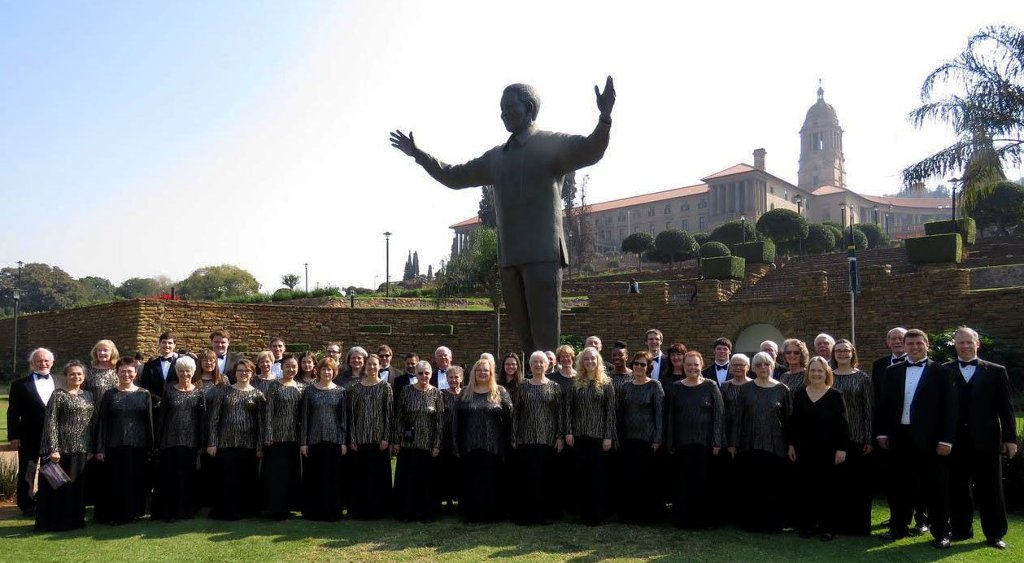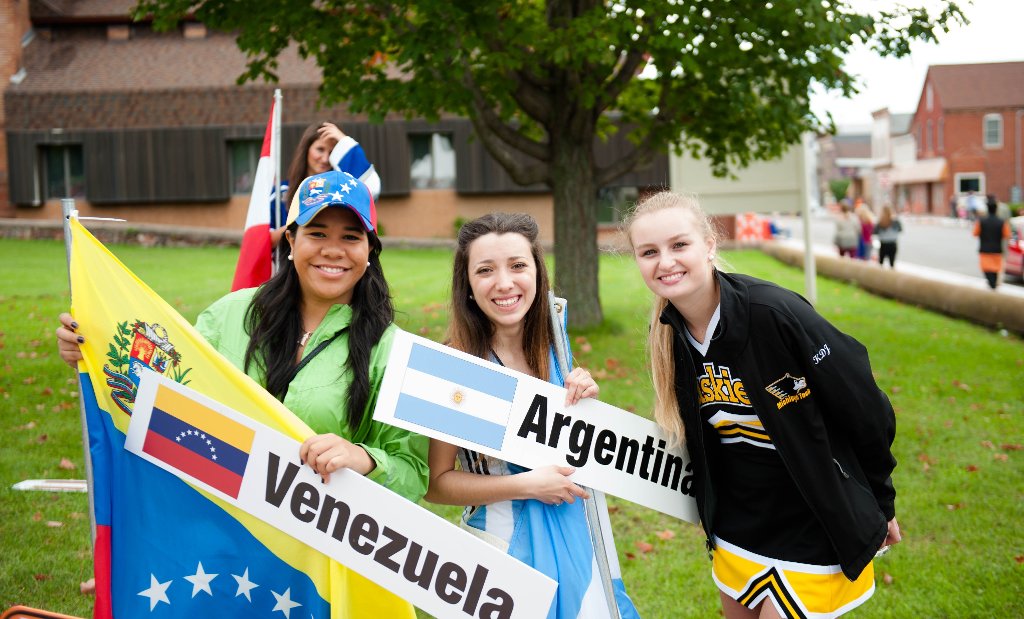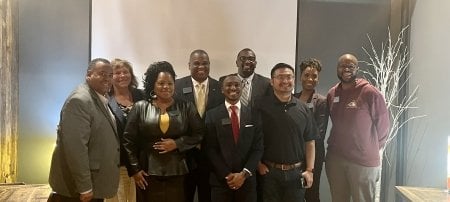Our STEM's got rhythm. From human-centered computer research to the performing arts, dance is alive on the Michigan Technological University campus. As part of nationwide International Education Week celebrations, the University is throwing a community dance party.
Michigan Tech International Programs and Services invites everyone of all ages to learn the stories and steps of traditional dances of Africa and India, along with Latin salsa, at the international social from 6-9 p.m. Tuesday, November 14, 2018, in the Memorial Union Ballroom. The free lessons are hosted by the Indian Students Association, NOSOTROS (Latino and Hispanic culture), and the African Students Organization. No experience required. Prize drawings and snacks add to the fun.
Feel the Beat Now
Stephanie Okyere Sarpong, a biomedical engineering grad student with the Michigan Tech African Students Organization, will teach a traditional African dance. "I've been dancing pretty much since I was a little girl," she says. "I just started teaching an Afrobeat fitness class this semester. It's all about learning some African dance moves, while having fun and burning calories—any one at all can participate regardless of fitness level or dance skill.
At the dance party, Sarpong will teach a cultural-based dance with some history behind it. Again, it's for all skill and fitness levels.
Michigan Tech NOSOTROS is no stranger to salsa lessons—Rachel Hetherington, pursuing her PhD in geology, and researcher Thomas Werner, an assistant professor of biological sciences, offer classes from 7-8 p.m. every Monday at Canterbury House. NOSOTROS, which means "we" or "us," was established at Michigan Tech to create community and understanding about Hispanic and Latin culture. "We are looking for new members," says Hetherington, who hails from England. Ironically, the group doesn't currently have any members from Latin America or with Latino heritage.
The Indian Students Association rounds off the night of dance lessons teaching Bollywood, bharatanatyam and kathak moves.

This is Your Brain on Dancing
Whether it's electric slide, cha-cha or Viennese waltz, dancing stimulates creativity, motivation and social intelligence. Learning, planning and executing the physical moves engages the motor cortex, somatosensory cortex, basal ganglia, and cerebellum, required for motor control, hand-eye coordination and voluntary movement. The well-documented benefits of dancing are associated with other forms of healthy physical activity, and include improved memory and strong neuronal connections. It can also improve balance and mood.
A creative practice, like dancing, can also help solve problems through the magic of misdirection. Albert Einstein referred to it as combinatory play: fire up the brain with an artistic endeavor and it just might lead to a breakthrough in the lab. Einstein's diversions included playing the violin. Which also made him no slacker in the romance department—it is reportedly what most charmed his second wife, Elsa.
A German Salsa Teacher
Thomas Werner can likely relate. But the NOSOTROS advisor didn't start dancing to help his research. He used it to ward off loneliness while working and living in remote locations where people tend to lead insular lives. Dance is a way to socialize and connect.
"A friend told me, you will never get a girlfriend if you don't know how to dance," Werner says, smiling. (And sure enough, it got him a wife.)
Dance Informs Research at Michigan Tech
Researchers Myounghoon "Philart" Jeon, an associate professor in computer science and cognitive and learning sciences, and Steven Landry, applied cognitive science and human factors PhD student, turn the tables on dancers. Instead of following the music, they create it through iISoP, the immersive Interactive Sonification Platform. Motion-tracking sensors trace location and movement of markers attached to their bodies, sending the data to the visualization and sonification system (dancers also create visual art).
"In addition to tracking movements, we want to estimate dancer emotion and mood," Jeon explains. The research is based on embodied cognition, with the entire body and feelings considered a critical part of cognitive processes.
The system can also teach people how to dance. "Once the system learns how dancers make music and visuals, then dance novices or even children can make similar outcomes without training," Jeon says. "We have lots of ideas for applying our platform for music and art education."
The implications from a computer science perspective: "Think about the embodiment process of computer interfaces: command line interfaces, graphical user interfaces, tangible/gesture user interfaces. Artists and dancers are experts in body expressions. We want to learn from them in order to design a better, natural interaction system," Jeon says.
Michigan Technological University is an R1 public research university founded in 1885 in Houghton, and is home to nearly 7,500 students from more than 60 countries around the world. Consistently ranked among the best universities in the country for return on investment, Michigan's flagship technological university offers more than 185 undergraduate and graduate degree programs in science and technology, engineering, computing, forestry, business, health professions, humanities, mathematics, social sciences, and the arts. The rural campus is situated just miles from Lake Superior in Michigan's Upper Peninsula, offering year-round opportunities for outdoor adventure.







Comments